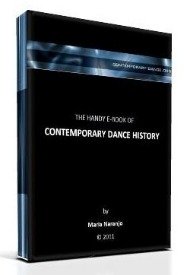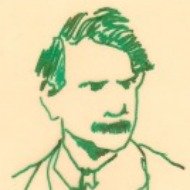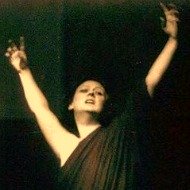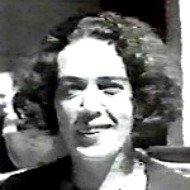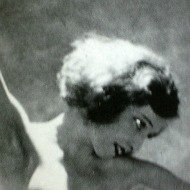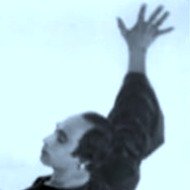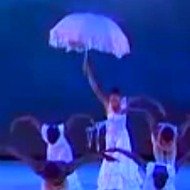MODERN DANCE HISTORY
I’ll use the expression modern dance history to talk about figures, choreographic productions and related facts occurred in western culture between the end of the XIX century and the 1950s.
Though, I’d like to remind that the word modern, applied to arts, has a wide and controversial meaning. So, for the purpose of this page I’ll use it as a chronological reference. A discussion about the ‘modernity’ of the following dance figures or pieces might come in other pages.
According to historians, modern dance has two main birthplaces: Europe (Germany specifically) and the United States of America. Although it evolves as a concert dance form, it has no direct roots in any ballet companies, schools or artists. Modern dance emerges as a consequence of its time, alone and outside any academic institution.
If you prefer to browse through a handy summary of modern dance history (with the names of figures who were or are significant for it), go to our general dance history page. The following is an expanded version of that part.
François Delsarte (1811 - 1871, France).
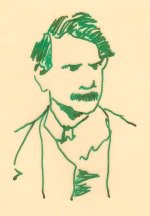
He is considered as a precursor by modern dance history because he invents a theory about the relationship between human movement and feelings.
His researches lead him to conclude that to each emotion or mental image corresponds a movement, or at least an attempt of it. That idea boosts one of the main ideological components of modern dance at its origins: “feelings and their intensity are the cause of movement and its quality”.
In other words, the source of dance lies inside the dancer, and not outside, in codified gestures, like classical dance would propose.
These are some of Delsarte’s renowned contributions:
- Elaboration of a new code of gestures, completely independent from the classical dance tradition.
- Study and codification of a logic system about the relationships between the different parts of the body, different types of movement and different human feelings.
- Creation of a system for the study, analysis and teaching of movement.
- Invention of the fundamental notion of the gesture’s expressiveness.
- Introduction of the importance of the upper body (trunk, arms, face) as the main vehicle of expression of the soul.
Delsarte’s student Steele MacKay spreads his theory and teachings in the United States of America, leaving his influence in several figures of modern dance history like Ruth Saint Denis, Ted Shawn and Isadora Duncan, among others.
Émile Jaques-Dalcroze (1865 - 1950, Austria - Switzerland).

Dalcroze is a pianist and conductor, important for modern dance history because he invents a new approach to movement called “Rhythmics” or “Eurhythmics”.
Its main contribution is the work over the relationship between music and movement. According to him, body expresses a degree of ‘musicality’ that can be studied and taught.
He doesn’t plan to apply his discoveries to dancers, but to musicians. Though, his teaching method has such a great success throughout Europe that it reaches some of the most important modern dance figures of the time, like V. Nijinsky (through Marie Rambert), Mary Wigman and Rudolph Laban .
These are some of Dalcroze’s renowned contributions:
- Introduction of a notion of relationship between movement and rhythm.
- Creation of an original educational method through movement.
- Some of his essential principles: body blockages are caused by rhythmic blockages; relaxation is indispensable to achieve a right movement; breathing is crucial to obtain relaxation and is the fundamental rhythmic movement.
Dalcroze’s method also leaves its influence in the United States of America thanks to Mary Wigman’s student Hanya Holm.
Rudolph Laban (1879 – 1958, Hungary - U.K.).
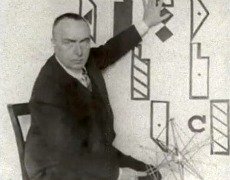 Rudolph Laban and his system for analysing and recording movement: Kynetography (Labanotation)
Rudolph Laban and his system for analysing and recording movement: Kynetography (Labanotation)Among the figures that produce the ideological and conceptual basis of modern dance, Rudolph Laban is considered by modern dance history as one of the most productive of them.
As a choreographer, dancer, teacher and researcher, he achieves to spread his name and ideas widely: first through Europe, then to the United States and nowadays around the whole world.
Laban publishes several articles and renowned books that are still important references for dance theory and history. Some of his titles are: “Choreutics”, “The Mastery of Movement” and “Educational Modern Dance”.
He also invents labanotation (or kynetography Laban), which is the most complete and effective system for analyzing and writing movement, created till the time. By this, he opens a completely new theoretical frame for movement shape and quality analysis.
His thought includes the idea that human movement is the seat of life and that it expresses the social state of being. Therefore, dance would be a need of communitarian experience. He believes that educating individuals and groups by the means of movement can correct society.
He influences Mary Wigman, Kurt Joos, Albert Knust and almost all European modern dancers from the period between the two wars.
Anne Hutchinson Guest brings his movement notation system to the United States of America, where it is taught nowadays almost in every institution for high level dance education.
Mary Wigman (1886 – 1973 Germany):
From a choreographic and aesthetical production perspective, Mary Wigman is, after Laban, the first relevant, European, modern dance figure reported by modern dance history.
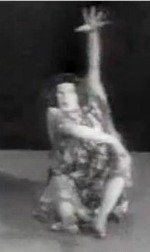 Mary Wigman's Hexentanz
Mary Wigman's HexentanzAs much as Laban, Dalcroze and Delsarte (who are of an extreme importance mainly because of their ideological contributions), Wigman develops her own understanding of dance and traduces it in a significant amount of choreographic pieces.
She opposes radically to classical dance values and methods, in a search for a dance that would accomplish an expressive function of the dancer’s soul.
Concerned about a close relationship between spirituality and movement, she defends the idea of invisible forces that would give life to dance. From this point of view, she somehow recreates the cathartic function attributed to dance in ancient societies.
Her choreographic work and thought are considered as part of the artistic trend called German expressionism. Her practice itself receives the name of dance of expression or “Ausdrückstanz” (in German).
Wigman’s dance pieces are remembered for their tragic, dark character and are described as introspective dances that reveal vibrant, vital, excited and passionate inner states of being.
She engages herself into the social and educational mission of the choreographer, by creating several schools and transmitting her artistic legacy. Among her renowned students are Hanya Holm, Harald Kreutzberg, Gret Paluca and Kurt Joos.
According to modern dance history, she influences the whole German dance trend during the 1920s and 1930s and what follows after the war.
Her ideas are brought to the United States of America by Hanya Holm, who passes the heritage to figures like A. Nikolaïs.
Still, in other countries like France, for example, Wigman heirs are responsible for the respective modern dance trends at the time.
Her most famous piece is called “Hexentanz” (The Witch).
Loïe Fuller (1862 – 1928, United States of America)
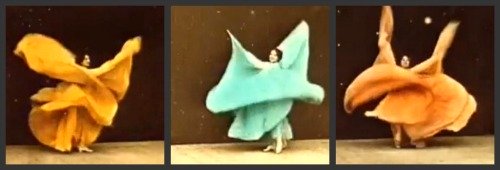
Loïe Fuller is not actually regarded by modern dance history as a dancer or a choreographer. This is because her main concern is not dance, or movement itself, as it is for the whole rest of following modern dancers.
Though, she is the author of hundreds of scenic art pieces in which she displays innovative experiments mixing lightning, scenic elements (big tissues) and dance.
Initiated in her native country within music-hall shows, Fuller has no knowledge of classical dance traditions, as any of the American pioneers of modern dance. Though, she has a great success in Europe (especially in Paris) where she causes a big influence and marks the artistic trends and vogue of the time.
Other than being the very first modern dancer in chronological terms (she is already successful at a time when Rudolph Laban is just studying), she is acknowledged by modern dance history because of her great contribution in new possibilities of scenic illusion, thanks to the use of the development of electricity.
Isadora Duncan (1878 - 1927, U.S.A. - France)
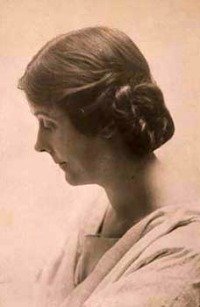 Isadora Duncan Photos Courtesy of the Isadora Duncan International Institute, Inc., New York, New York.
Isadora Duncan Photos Courtesy of the Isadora Duncan International Institute, Inc., New York, New York.Modern dance history describes Isadora as an emblematic figure of freedom. This is not only because she refuses to follow academic dance education but because she has the courage to break dance traditions and social codes with her aesthetical propositions.
She constructs her thought by studying other artistic languages or ideological fields (like poetry, sculpture, music and philosophy). Some when she says: “my dance teachers are J.J.Rousseau, Walt Whitman, and Nietzche”.
For Isadora, dance is the expression of her personal life. She has an inclination for nature, what makes her create dances around related subjects like the waves, clouds, the wind and trees.
A remarked feature of her creative method is the use of classical music as a source of inspiration, from which she translates its emotions. Also, her dance is influenced by the figures drawn on ancient Greek vessels.
Europe receives her charismatic personality, transparent tunic, bare foot and even scandals as a new lyrical message.
For modern dance history, she points the birth of another type of dance, which would be the consequence of an interior movement of the dancer. At the same time, she carries a new spirit of liberation from conventions and an idea of dance as an expression of the divinity inside every human being.
Her contribution is not considered so much in terms of a dancing technique but mostly because of what her work means for the cultural process of opening minds. Though, from the artistic perspective she acts according to some of the considered ‘modern dance principles’ like inventing a gestural language and adapting movement to the artistic project.
But as I mentioned above, she is remembered mainly because of her boosting to the liberation of conventional codes that restrict body (and especially feminine body) as a general fact in society. Although she dedicates herself to teaching as well and founds numerous schools in Europe, she doesn’t leave significant heirs.
Ruth Saint Denis (1877 - 1968, U.S.A.)
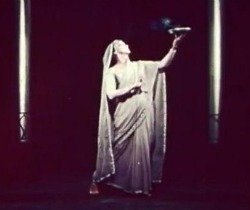 Ruth Saint Denis
Ruth Saint DenisRuth Saint Denis performs and is renowned mainly in the United States. She is the daughter of one of the first women admitted to University, feminist and amateur of alternative curative methods.
She grows within an ideological ambience of oriental religions, which will be reflected later in her choreographic productions.
Initiated in Delsarte’s method, her mother pushes her to the scene in order to sustain their family. This is how she starts creating music-halls in New-York.
She has her own philosophical and mystical discourse too. The female dancer is for her like a priestess, which contrasts with the prejudice of the time of the dancer as a woman of little virtue. Dance is for Saint-Denis a mean for reunification with the divine.
Being famous already, she meets Ted Shawn, who will be her partner in the foundation of the DENISHAWN School and company (Los Angeles 1915 - 1931). They are known by modern dance history for combining the passionate charisma of Saint-Denis with the technical rigor of Shawn.
The school offers an eclectic program of courses, from yoga and oriental religions to Delsarte’s and Dalcroze’s methods.
Some of its teachers are Lester Horton, Michio Ito and Louis Horst.
Important figures in modern dance history like Doris Humphrey, Charles Weidman, and Martha Graham, also go through their teachings and participate in their company’s activities.
The Denishawn choreographic pieces are remembered for its big and spectacular formats, with elaborated sceneries and development of what Saint-Denis calls “musical visualizations”. These are danced representations of music and are considered as a first attempt of choreographic abstraction.
In 1931 the school dissolves and the couple splits up.
Ted Shawn (1891- 1972, U.S.A.)
After the dissolution of the Denishawn School and company, Ted Shawn continues his choreographic career independently.
With the first company composed by men only in modern dance history, he makes tours around the United States (visiting universities specially) and attracts a lot of young people from a high intellectual level.
Shawn, inspired in Delsarte, fights the prejudice of the effeminate performer. He educates boys that look like muscular athletes, creating an image of a masculine and sportive dancer. He also founds a choreographic center: The Jacob´s Pillow (Massachusetts), which is still an important place for dance as much for its studying offers as for its dance festival.
Doris Humphrey (1895 - 1958, U.S.A.)
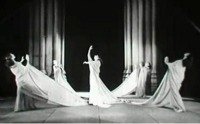 "Air for G string". Choreography: Doris Humphrey.
"Air for G string". Choreography: Doris Humphrey.Doris Humphrey joins the Denishawn in 1917, being already a dance teacher in her native province.
She works for Saint Denis as a teacher and dancer, participating in the company tours around America and Asia till 1926.
It is within the Denishawn that Humphrey associates with the dancer Charles Weidman and the pianist Pauline Lawrence to create the Humphrey - Weidman company (1927 – 1944).
Their artistic productions are known in modern dance history as being contrastingly sober beside the commercial and spectacular wastes of Saint Denis. Also, Charles Weidman contributes to them with a theatrical sense and works using pantomime and humor.
Humphrey develops an original dancing technique by observing the relationship between gravity and human body. She establishes a main physical principle for dance: Fall and Recovery. This notion is resumed in her famous sentence: “Movement is situated on a tended arc between two deaths”: which are vertical balance and horizontal balance.
Other than being the first in modern dance history to chose imbalance as the base for her movement, she also teaches extremely important notions (as technical means) like weight, rebound, suspension and the importance of breath.
Another one of her contributions is the understanding of the dancing group as a main choreographic entity and not only as a mass counterpointing the soloist.
The piece called “Water study” (1928) is an example of her group experiments.
She is concerned about other questions too, like American subjects (reflected in choreographies like “The Shakers” (1931) or the violence of the world (“Theater piece” (1936) or “Inquest” (1944).
She leaves a written patrimony about her choreographic thought in a book entitled “The art of making dances”.
In 1944, she stops dancing because of arthritis and José Limón, who has joined the Humphrey-Weidman group since 1928, creates a new company for which she continues working as an artistic director.
Jose Limon (José Arcadio Limón, 1908 - 1972, Mexico - U.S.A.)
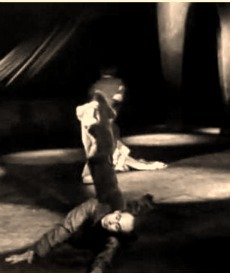 "The Traitor". Choreography: Jose Limon
"The Traitor". Choreography: Jose LimonLimón is responsible for spreading Humphrey’s technique in Europe. Although that knowledge is renowned under his name, he always insists that she is the innovator and he is a continuator.
Though, he has his own choreographic concerns and works over social themes. He expresses a consciousness of the precarious state of humanity in dramatic and tragic pieces about subjects from his natal historical context.
Some examples of that are his pieces “La Malinche” (1949), “Carlota” (1972) and “The Pavane of the Moor” (1949).
Limón is strongly affected the first time he sees a dancing piece (by Harald Kreutzberg and Ivonne Georgia). His impression is an example of what the entire western world is still discovering at the time: "what I witnessed, simply and irreversibly changed my life. I saw dance as a vision of indescribable power. A man can dance with dignity and torrential majesty; dance as Michelangelo’s visions or Bach’s music”.
According to modern dance history, his debut in 1947 owns him the title of the finest male dancer of the moment by the New York Times. He was successful in Europe too, with a first performance in Paris in 1950.
Martha Graham (1894 - 1991, U.S.A.)
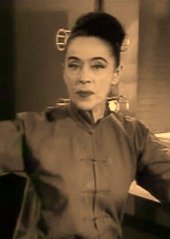
Graham enters the Denishawn school and company in 1916 and becomes the most famous and monumental pupil of this seedbed.
In 1923 she moves to New York, where she participates in music halls and musical comedies, at the same time she works on dancing solos at her studio.
She develops her own training technique, which will reach a world-wide success till the present time. These are some of its principles:
- Focus on the ‘center’ of the body.
- Coordination between breathing and movement.
- Relationship with the floor.
-Alternation between two movement intentions: “contraction and release”.
She creates an original choreographic vocabulary focused on the movement of the pelvis for she privileges this part of the body as the zone of expression of the feminine libido. Her company is exclusively for women until 1938.
She also proclaims the idea that dance works over an ancestral memory.
Graham remains active as a choreographer during a process that lasts over sixty years. Some aesthetical cycles have been determined by modern dance history in order to understande her work: the oriental cycle, the primitive, the American and the Greek.
Her work also reflects the American ambience of the moment trough her search for an identity, exaltation of the pioneer spirit, fight against the Puritanism and follow of a mystical spirituality.
Figures like Louis Horst, Erick Hawkins, Isamu Noguchi and composers like Aaron Copland or Samuel Barber are among her collaborators.
These are the titles of some of her pieces:
Primitive period:
- “Lamentation” (1930)
- “Primitive Mysteries” (1931). Subject: finding the universal soul by imitating the steps from the ancestors).
American period:
- “Frontier” (1935)
- “Appalachian Spring” (1944)
- “American Document” (1938)
Greek period: (inventory of archetypes from a matriarchal society).
- “Hérodiade” (1944)
- “Cave of the heart” (1946). Subject: Medea’s myth.
- “Night Journey” (1947). Subject: Jocasta ‘s myth.
- “Clytemnestra” (1958)
- “Judith (1950)”
- “Errand into the Maze” (1947). Subject: Arianne and the minotaur’s myth.
In 1984, Martha Graham’s company is worldwide recognized till the point of being invited by Rudolph Nureyev to the Paris Opera.
She dies in New York in 1991, leaving the Martha Graham Dance Company and School as a legacy which remains as an invaluable patrimony for the dancers community.
Alvin Ailey (1931 - 1989, U.S.A.)
Alvin Ailey has an important place in modern dance history for being the choreographer of the ‘black modern dance’.
He goes trough a variety of teachings and influences (like the one of Katherine Dunham, Lester Horton, Doris Humphrey and Martha Graham), before creating his own company: The Alvin Ailey American Dance Theater.
What distinguishes his work the most is the focus on the expression of black people’s feelings.
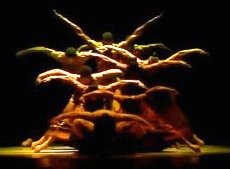 "Revelations". Choreography: Alvin Ailey.
"Revelations". Choreography: Alvin Ailey.His most famous choreography is entitled “Revelations” (1960) and is considered a master piece that gathers his most renowned aesthetical choices: lyricism, use of ethnic music (negro spirituals in the case), Graham technique, spirituality and revolutionary ambience.
Although he is recognized for his artistic emphasis in black culture aspects, over the time he opens his company to multiethnic possibilities. According to modern dance history, this happens before he establishes an own choreographic language.
Still, he’ll stay as the one who opened the way and place for multiethnic dances and new choreographers, through the opening of his school and company for others to create within.
Alwin Nikolaïs (1910 – 1993, U.S.A.)
Designer, composer and choreographer, Nikolaïs is one of the most popular modern dance artists around the world.
He has a marked preference for abstraction, which he expresses from the very beginning of his choreographic career: “I had to redefine dance and I concluded that the essence of this art is movement, just as color is for the painter and the three dimensions are for the sculptor”.
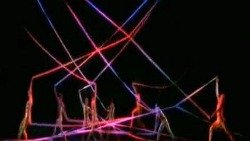 “Tensile Involvement”. Choreography: Alvin Nikolaïs.
“Tensile Involvement”. Choreography: Alvin Nikolaïs.He creates dance pieces where human body’s movement has the same relevance as optical effects, collages, paintings, projections and all kind of accessories for scenic illusions.
These are some of his main aesthetic choices:
- Any point in the body can be the ‘center for movement’.
- Human being is just another element among the moving universe.
- Body undergoes several metamorphoses and becomes abstract: accessories, tissues, big sticks…
- Improvisation and composition are part of the technical training. The student is responsible of exploring his own body.
Nikolaïs is also renowned in modern dance history for his amazing teaching skills, which focus on developing the capacity of invention in his students. Some important figures formed at his company are Murray Louis, Carolyn Carlson and Susan Buirge.
You can see there’s a lot to tell about modern dance history and that its figures many. I’ve done the summary above just to help you make yourself one first general idea.
I’ll be expanding this modern dance history section in the future, by providing more information about specific topics belonging to it. Also, in case you are searching for this, I’ll try to include some less mentioned figures of the story like Kurt Joos, Harald Kreutzberg, Oskar Schlemmer, Louis Falco, Lester Horton, Paul Taylor, Twyla Tharp, Murray Louis…
Related threads:
British Modern Dance between 1965 and 1985
Lester Horton and cultural plurality
Dvd on modern dance history: trailblazers of modern dance
There are many other interesting threads in contemporary-dance.org. Just visit our forum for dance questions about theory and history and browse!
Also, if there’s any information about modern dance history you didn’t find here and would like to have, ask me through the form at our page for dance questions. I’ll do my best to provide it for you!
Versión en Español: Historia de la Danza Moderna
Return from Modern Dance History to Dance History
Return from Modern Dance History to Contemporary Dance Home Page
The handy e-book of CONTEMPORARY DANCE HISTORY:
The Dance Thinker is our occasional E-zine. Fill in the form below to receive it for free and join us.
Read:
"The Dance Thinker"
BACK ISSUES
Post contemporary dance announcements (workshops, auditions, performances, meetings and important news... it is free.)
Related Pages



